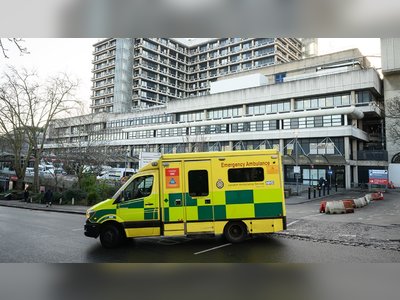
Earthquake was one of biggest in Caribbean history
Where and when did the earthquake strike?
The earthquake struck at 2:10pm in the Caribbean Sea, around 80 miles north east of George Town and equidistant from the coasts of Jamaica and Cuba. The earthquake originated at a depth of around 6.2 miles, according to the US Geological Survey.
Historically, how big an earthquake was this?
According to Simon Boxall, at Hazard Management Cayman Islands, this was the sixth strongest Caribbean earthquake on record and the second strongest event in the past 176 years, eclipsed only by a Dominican Republic 8.1 magnitude event on 4 Aug. 1946.
Don Blakeman, a geophysicist at the US National Earthquake Information Center, told the Compass, “This is easily one of the largest earthquakes recorded in the Caribbean. A 7.7 magnitude event is pretty rare.”
For comparison, the earthquake that devastated Haiti in 2010, killing more than 200,000 people, was a magnitude 7.0 event.
So why was the damage so limited in this case?
The fact that the epicentre of the earthquake was so far from land (more than 70 miles from the closest point in Jamaica) shielded communities from the worst impacts. The Haiti quake was inland, less than 7 miles from the town of Léogâne.
Though buildings shook in Cayman and as far away as Miami during Tuesday’s quake, there were no reported injuries or serious damage.
According to Blakeman, the nature of the plate tectonics in the Caribbean region meant that this was a ‘strike-slip’ event, which typically causes less damage than subduction or ‘thrust’ impacts.
Strike-slip event?
Almost all of the seismic activity around Cayman is caused by the movement of the Caribbean and North American tectonic plates.
The Oriente fault, which separates the two plates, runs south of Cuba and curves westward between Jamaica and the Cayman Islands.
According to Blakeman, the plate tectonics in this area are characterised by lateral movement.
“The plates slide against one another,” he said.
“Even though that releases a high blast of energy, it is different direction and type of release than a subduction or thrust earthquake when a plate goes beneath another one.”
Damage is typically less severe from lateral or strike-slip quakes.
Was there a tsunami?
When people think of tsunamis, they immediately conjure up images of the catastrophic walls of water that struck Indonesia and Thailand in 2004 and Japan in 2011. But a tsunami is technically any wave action caused by an earthquake. In that sense, Cayman did experience a very minor tsunami on Tuesday.
A radar measuring system in George Town Harbour, part of the Caribbean Tsunami Watch System, recorded a definite spike in sea-level shortly after the earthquake. Data from the system shows a wave of just over half-a-metre (1.5 feet) as a result of the earthquake.
Could it have been worse?
Again, Cayman appears to have been protected from more severe impacts by the dynamics of the plate tectonics in the region.
According to Diego Melgar, a tsunami expert at the University of Oregon, lateral strike-slip impacts just don’t generate the same type of wave effects as subduction impacts.
If that sounds frighteningly complex, he recommends a simple home science experiment. Stand in your swimming pool and move your hand swiftly from side to side just beneath the water’s surface. Now try moving your hand up and down. Which creates the greater water movement?
So is Cayman safe from severe tsunamis?
According to Melgar, the type of earthquakes seen on the Oriente fault line off Cayman are pretty much always lateral fault quakes. This is just the nature of the way the plates move in this area.
“From a lateral fault event you will never see the type of gigantic tsunamis like the 30-metre wave in Japan [in 2011],” he said.
That doesn’t mean Cayman couldn’t suffer more severe wave impact. He estimates up to around three metres (10 feet) is possible.
“There is always the added hazard of underwater landslides which are hard to predict and can impact wave action,” Melgar said.
Hazard Management Cayman Islands, in a vulnerability analysis for the territory in 2009, estimated the threat from tsunamis to be relatively low. Its report noted that the underwater geography around Cayman, including the lack of a sloping continental shelf, offered some protection against the build-up of large tsunami waves.
What are the chances of a serious earthquake closer to Grand Cayman?
The Oriente fault line’s closest point to Grand Cayman is just over 20 miles away. In fact, some of the aftershocks from Tuesday’s quake were recorded significantly closer to the island. The nearest was a 4.9 magnitude impact, just over 20 miles off East End.
According to Blakeman, a high magnitude earthquake closer to the islands could potentially do more damage, though there are other factors at play, including the depth of the impact, the type of groundrock, and the quality of the buildings. He adds that a 7.7 magnitude impact is unusual for the region and, while Caymanians should be aware and prepared for potential impacts, history suggests this type of event is likely to be rare.










